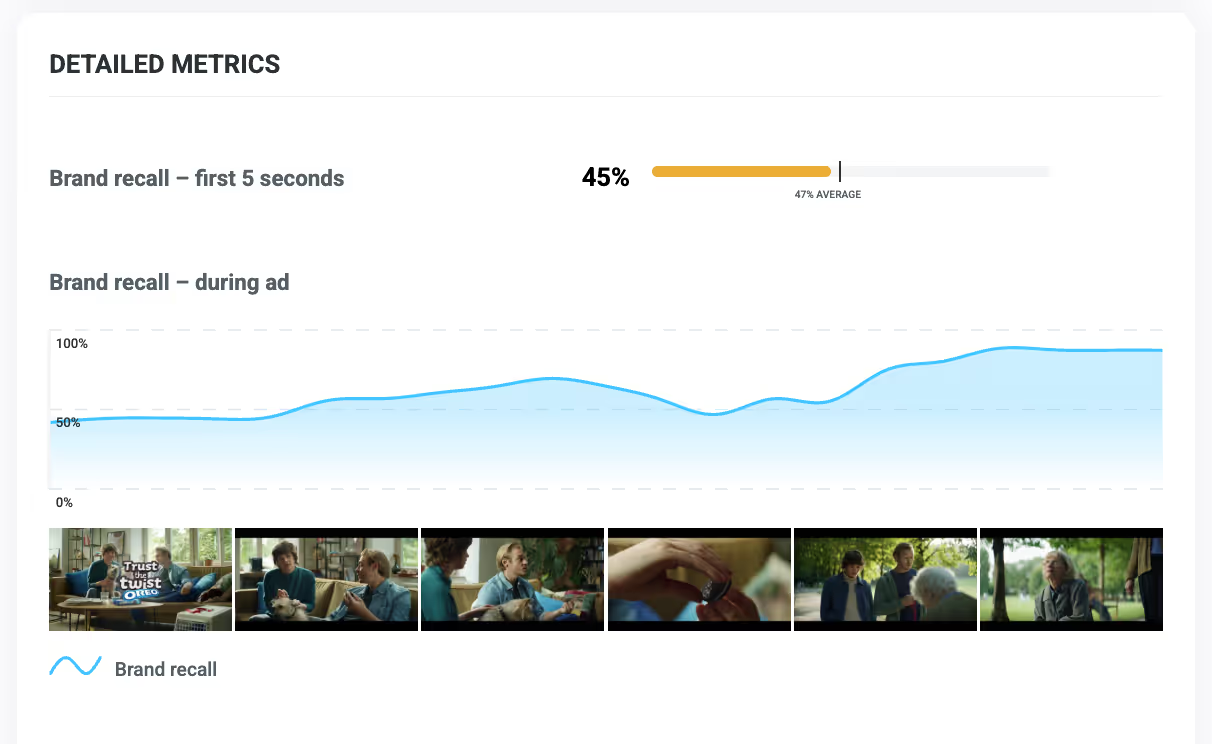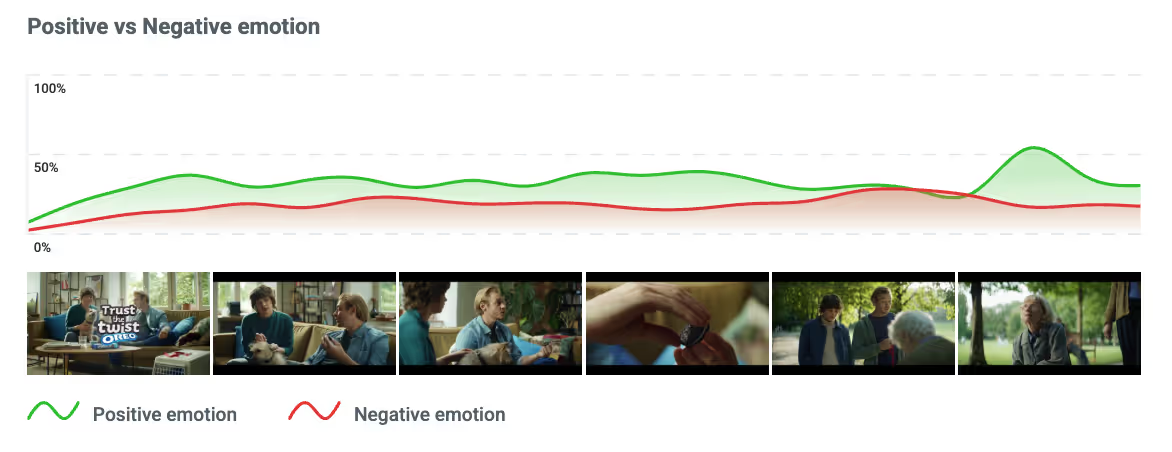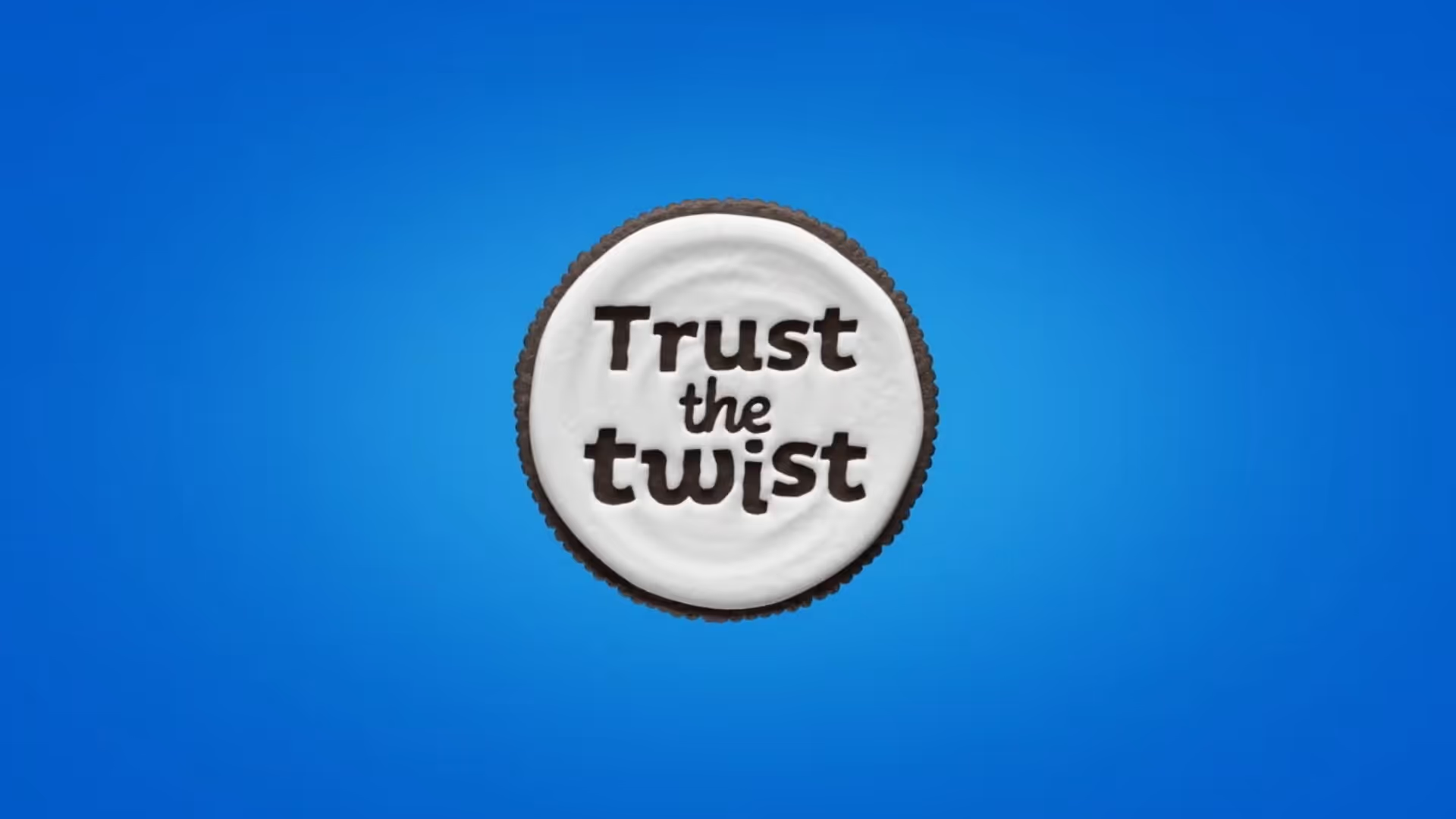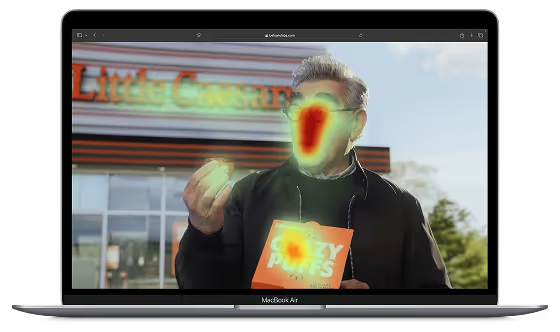In 2022, a group of MIT mechanical engineers set out to understand why the crème in an Oreo always sticks to just one side when twisted open.
The team ran a series of lab tests to get the crème to split evenly, but no matter the flavor or amount of filling, the center kept globbing onto a single wafer.
Although the experiments didn’t lead to a clear conclusion, the phenomenon sparked inspiration for LePub Amsterdam’s campaign, Trust the Twist. The idea playfully encourages people to let an Oreo cookie make their everyday decisions, treating the twist as a new decision-making ritual, on par with flipping a coin.
After launching across Europe and Australia on social media, TV, and digital platforms, the campaign went on to win a Silver Lion at Cannes. But awards and accolades don’t always translate into sales.
To find out how effective this campaign truly was in the hearts and minds of its audience, Behavio put one ad to the test on a representative sample of 500 consumers in the Netherlands. The goal was to use subconscious ad pre-testing methods to uncover how well the branding, messaging, and emotion landed.
Here’s what the results revealed:
Breaking down Oreo's “Trust the Twist” ad

1. Branding lands well, but not always early enough
The ad’s strongest performance was in branding, with 61% of viewers able to recognize Oreo as the brand behind the spot, well above average. Clear brand assets like the packshot, signature Oreo colors, and the claim “Trust the Twist” played a key role here.
However, branding was much weaker in the opening moments. Only 45% of viewers recognized Oreo in the first five seconds, a missed opportunity in an era of skippable ads. Holding the packshot longer and embedding the product earlier into the story could help increase salience from the start.

2. The concept is fun, but the cookie connection is fuzzy
While the line “Trust the Twist” resonated—64% recalled it—the overall idea left some viewers confused. Many found scenes humorous or charming (especially those involving the dog), but didn’t walk away with a clear understanding of what the ad was trying to say.
The link between the cookie, the dog’s name, and the decision-making ritual was too subtle for many to catch. Clarifying this connection and simplifying the narrative could improve comprehension and help viewers associate Oreo more closely with the cookie category.
3. Category recall is a weak spot
Only 42% of viewers recognized the product category (cookies), placing the ad in the bottom 12% for this metric.

That’s a concern, particularly for a brand like Oreo, which doesn’t have the same immediate category association as “milk” or “chocolate.” Strengthening that link by showing the product being eaten, dunked, or even named explicitly in voiceover could boost relevance and remind viewers that this is an ad for cookies.
4. The emotion is middling; some smiles, but little love.
Emotionally, the ad fared below average, with 54% of viewers reporting positive feelings, mainly mild amusement rather than deep engagement. While the dog and light humor were appreciated by some, the story didn’t create a strong emotional hook or memorable moment.

To build stronger emotional peaks, the brand could lean further into humor, storytelling, or surprise, especially near key branding cues.
The verdict
“Trust the Twist” is a clever campaign with a distinct look and strong brand assets, but this ad particularly shows that even a great idea needs clarity to connect.
With its branding outperforming emotion and need, the spot risks being remembered as a quirky video rather than an effective cookie ad.
Simplifying the story, amplifying emotional peaks, and reinforcing the product’s category could help Oreo not only win awards, but win hearts (and baskets) too.











.avif)








